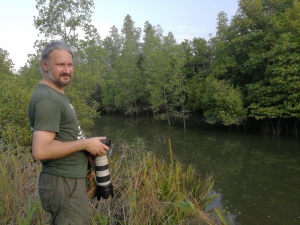Chen, L.-L., Yuan, P., You, M.-S., Pozsgai, G., Ma, X., Zhu, H. & Yang, G. (2019) Cover crops enhance natural enemies while help suppressing pests in a tea plantation.
Annals of the Entomological Society of America,
112(4), 348–355. DOI:10.1093/aesa/say050 (IF2019 1,510; Q2 Entomology)
NON-cE3c affiliated
Tea is an economically important crop, consumed by billions of people. Despite the increasing market for pesticide-free products, the use of pesticide in tea is still high. In order to investigate whether intercropping promotes biological control organisms, Chamaecrista rotundifolia (Pers.) Greene, Indigofera hendecaphylla Jacq., Trifolium repens L., and Vigna sinensis (L.) were separately intercropped with free weeding as control in a tea plantation at Yangli, China. Arthropods were collected by taking sweep-net samples, and treatment effects on assemblages were investigated. The combined species richness of all arthropods and that of parasitoids was significantly increased in intercropped treatments while the species richness of herbivores and predators was only greater in C. rotundifolia and I. hendecaphylla intercropped treatments. Compared with control, the combined abundance of all arthropods, and that of herbivores was lower, while the abundance of parasitoids and its taxa was greater in all intercropped treatments. The abundance of predators and its taxa was greater only in tea plantations intercropped with C. rotundifolia or I. hendecaphylla. Of the herbivores, the abundance of Empoasca onukii Matsuda, Sternorrhyncha, Aleyrodidae, and Pentatomidae was greater in the areas intercropped with C. rotundifolia in comparison with the control, but the abundance of Thysanoptera and Geometridae caterpillars was lower. The recorded increase in the abundance of beneficial arthropods may explain the lower abundance of Thysanoptera or Geometridae caterpillars detected in the intercropped tea plantations. Our results indicate that intercropping has the potential to enhance arthropod biodiversity, and to provide an option for sustainable pest control in tea plantations.

